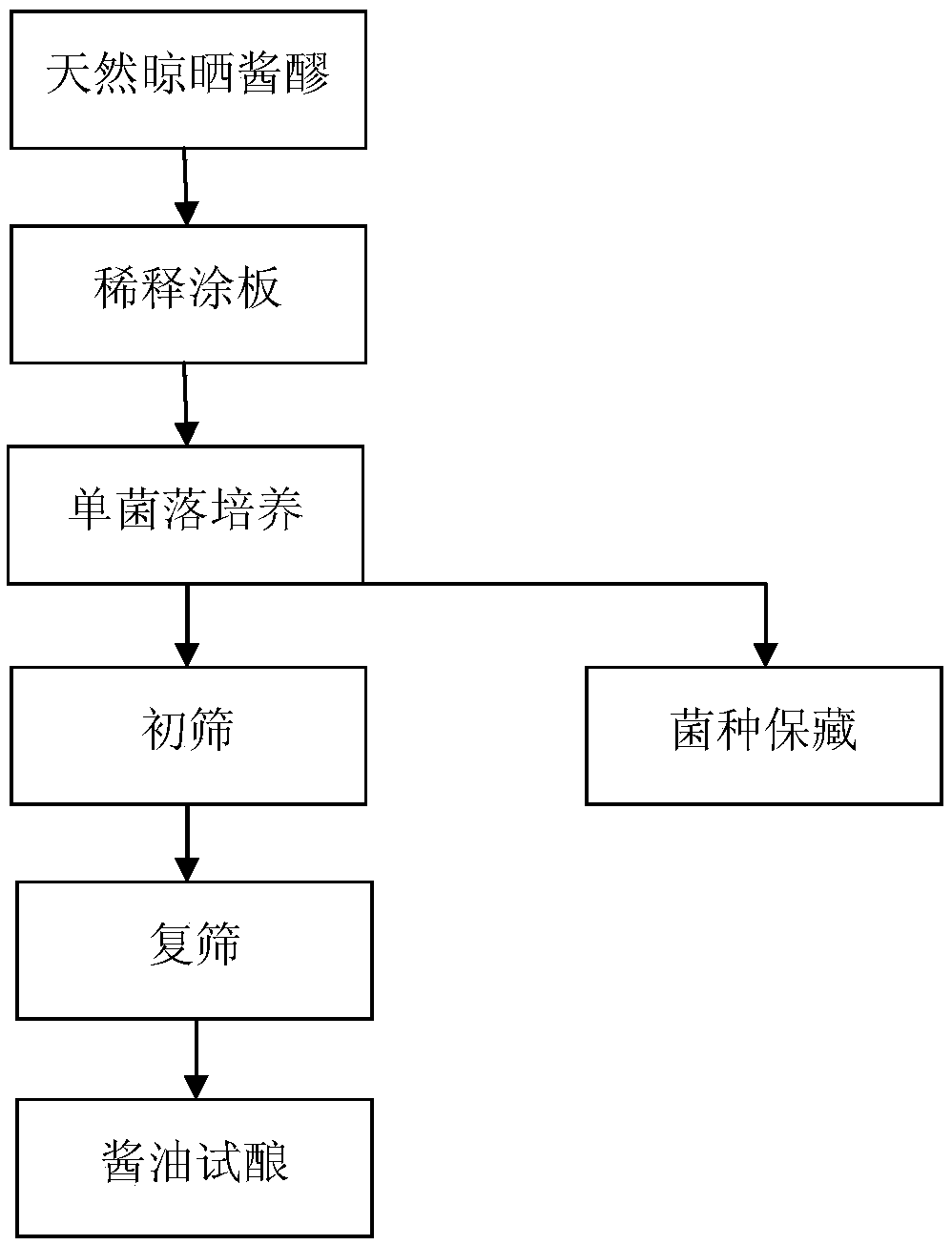Lactobacillus plantarum for increasing content of 3-hydroxy-2-butanone in soy sauce and application of lactobacillus plantarum
A technology of Lactobacillus plantarum and soy sauce, applied in the directions of microorganism-based methods, bacteria, microorganisms, etc., to achieve the effects of fresh and sweet flavor, improved aroma and taste, and increased content
- Summary
- Abstract
- Description
- Claims
- Application Information
AI Technical Summary
Problems solved by technology
Method used
Image
Examples
Embodiment 1
[0039] 1. Handling of raw materials
[0040] Take the soy mash fermented under traditional process conditions, add physiological saline and dilute to 10 -5 、10-6 Concentration, made of cell dilution.
[0041] 2. Primary screening of lactic acid bacteria
[0042] The soy sauce dilutions of different dilution concentrations are evenly spread on the solid MRS medium (containing 18% salt, the formula of the solid MRS medium is: take by weighing 180g sodium chloride, 10g peptone, 5g beef extract powder, 4g yeast extract Powder, 20g glucose, 1mL Tween-80, 2g dipotassium hydrogen phosphate, 5g sodium acetate, 2g triammonium citrate, 0.2g magnesium sulfate, 0.05g manganese sulfate, 15g agar, dissolved in 1000mL distilled water, adjust the pH to 6.2 , sub-package, 0.1Mpa, 115°C sterilization for 15min), put it in the incubator and culture it at 37°C for 48h, then select the lactic acid bacteria with the typical colony form of Lactobacillus plantarum on the solid MRS medium. Round sh...
Embodiment 2
[0057] Genetic stability detection of Lactobacillus plantarum strain ZF611
[0058] The plant Lactobacillus ZF611 in Example 1 (i.e. the plant Lactobacillus strain (Lactobacillus plantarum) ZF611) of the present invention is continuously passaged on the MRS medium for 10 generations, and the 1st generation, the 5th generation, and the 10th generation are cultivated strains respectively According to the method in Example 1, the content of 3-hydroxy-2-butanone in the fermented crude oil was detected and sensory evaluation was performed to judge its genetic stability. The specific data are shown in Table 3.
[0059] Table 3. Seed koji detection results of passage stability test
[0060]
[0061] Judging from the content of 3-hydroxy-2-butanone and the comprehensive sensory analysis results, Lactobacillus plantarum (Lactobacillus plantarum) ZF611 has good genetic stability and meets the requirements for production and use.
Embodiment 3
[0063] With the plantarum lactobacillus ZF611 in embodiment 1, be 10 with thalline final concentration 4 The dosage of cfu / ml is used in the middle stage of soy sauce fermentation. The soy sauce without Lactobacillus plantarum ZF611 is used as the control group, and the traditional high-salt dilute fermentation process is carried out at 30°C for static culture and fermentation. After 55 days of fermentation, the light industry Standard QB / T4234-2011 measures the content of 3-hydroxy-2-butanone and conducts sensory evaluation by professional appraisers. The results are shown in Table 4 and Table 5.
PUM
| Property | Measurement | Unit |
|---|---|---|
| diameter | aaaaa | aaaaa |
Abstract
Description
Claims
Application Information
 Login to View More
Login to View More - R&D
- Intellectual Property
- Life Sciences
- Materials
- Tech Scout
- Unparalleled Data Quality
- Higher Quality Content
- 60% Fewer Hallucinations
Browse by: Latest US Patents, China's latest patents, Technical Efficacy Thesaurus, Application Domain, Technology Topic, Popular Technical Reports.
© 2025 PatSnap. All rights reserved.Legal|Privacy policy|Modern Slavery Act Transparency Statement|Sitemap|About US| Contact US: help@patsnap.com



